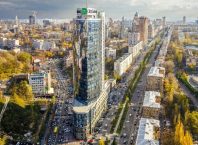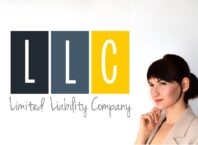Propylene glycol is a tasteless, odorless and colorless, hygroscopic liquid that has a low toxicity degree. It is commonly referred to as PG and has a chemical formula C₃H₈O₂. It is stable, has a high boiling point and is highly soluble. It is produced when propylene oxide reacts with water.
Contents [show]
Industrial Applications of PG
Propylene glycol has a chemically unique property of being neutral. It does not react with other chemical compounds, making it useful in the manufacturing of contrasting elements such as perfumes.
The hygroscopic nature of PG makes it miscible in acetone, chloroform, and water. It is widely used as a solvent, an emulsifier agent and a medium that dissolves and holds the active ingredients efficiently. It is also used to reduce the freezing points of chemicals. Propylene glycol is commonly used in the production of unsaturated polyester resins, antifreeze, cosmetics & personal care products, liquid detergents, and functional fluids. Propylene glycol is also used as a humectant which is used for preserving food products and tobacco.
The Latest PG Market Trends Globally
The global propylene glycol market is anticipated to witness a sharp growth curve during the coming years, owing to a rise in demand from various end-user industries. Globally, the market for PG is fragmented and is divided based on the following aspects:
Market Segmentation on the Basis of Source
Segmentation on the source, the market is segmented into bio-based and petroleum-based PG. The petroleum-based PG is further subdivided into propylene oxide whereas the bio-based is subdivided into glycerin and sorbitol. Increasing environmental concerns because of toxic pollutants released by petrochemical processes has encouraged the vendors to use biodegradable alternatives. Thus the demand for bio-based PG is expected to grow exponentially in the coming few years.
Market Segmentation on the basis of Application
Based on application, the PG market is divided into functional fluids, antifreeze, unsaturated polyester resin, cosmetics & pharmaceuticals, plasticizers, and liquid detergents. The unsaturated polyester resin constitutes a prominent share in the global PG market and is anticipated to grow strong in the years ahead. This segment is immediately followed by the food and cosmetics & pharmaceuticals segment.
Market Segmentation on the basis of End-use Industries
On the basis of end-use industries, the PG market is globally divided into industries such as pharmaceuticals & cosmetics, building & construction, food & beverage, and transportation. The transportation industry is further subdivided into automotive, marine and aerospace industries. Currently, the sector that is driving the most growth is the building & construction industry. The transportation segment, on the other hand, is growing by leaps and bounds, owing to a large number of automobiles sales.
Market Segmentation on the basis of Geography
Considering region-wise segmentation, the PG market is divided into Europe, Asia-Pacific, North America, Africa, the Middle East, and South America. The global PG market enjoys a considerable market share from the Asia Pacific region. This is primarily due to improved living standards of people and rapid industrialization especially in the emerging economies like China and India. Another factor that’s propelling the PG market in APAC is the strengthening of the automotive manufacturing industry. Furthermore, a high propylene glycol market growth rate is expected from the Central and Eastern European regions owing to a rise in the unsaturated polyester resin demand.
Factors Restraining the Global PG Market Growth
The major factor responsible for restricting the global propylene glycol market growth is the high market concentration of petroleum-based PG. Differentiating the propylene glycol based on grades, it is divided into industrial grade and USP grade. Industrial grade propylene glycol serves as a base feed without many modifications an is then used as a feedstock for manufacturing other chemicals. Thus the manufacturers have little scope for differentiating the product in this case. Another challenge faced by the PG manufacturers are the health issues associated with propylene glycol which are restricting its market growth.
The Top PG Suppliers on the Global Front
The two most dominant manufacturers that have emerged in the global PG market are the LyondellBasell Industries and the Dow Chemical Company. Dow Chemical has plants in the U.S., Brazil, Western Europe, Australia, and Thailand. LyondellBasell Industries has plants in the U.S. and Western Europe. Another major player in the global PG market is the BASF SE, headquartered in Germany, which is successfully catering to a wide range of customers.
The global propylene glycol market is spearheaded by some limited number of global suppliers that are dominating the PG market. Globally, the major suppliers have adopted various growth strategies such as new product launches, expansions, mergers & acquisitions, joint ventures etc. to fortify their position in the given market. you should also read about norborene and its benefits.












